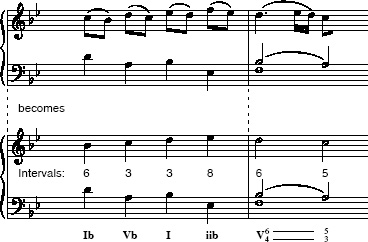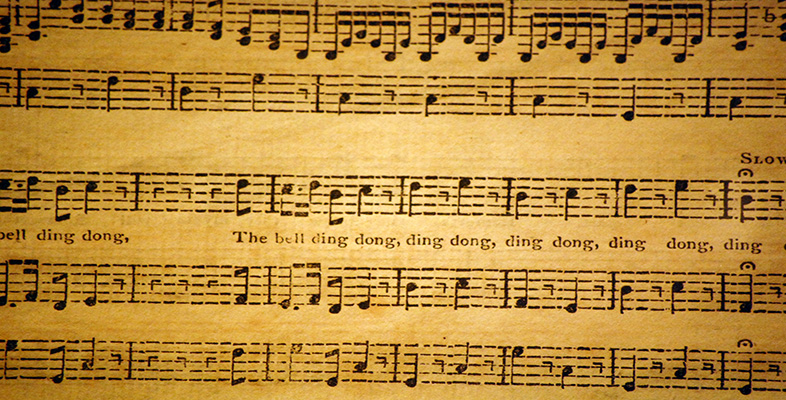3.2 Simple reductive processes
Activity 5
Return to Example 1 and consider bars 3–4 of Mozart's theme. Here we have an ascending line through a third (B♭, C, D). Each of the three notes in this line is elaborated by an upper appoggiatura (C, D, E♭), which in each case is dissonant and must resolve down to the harmony note. One possible reduction of these two bars is shown in Example 7a and can be heard in the audio clip below.
Click to listen to audio clip
Examples 7a and 7b show two attempted reductions of this passage.


In making the first reduction (Example 7a), I have distinguished the harmony notes (i.e. those which are consonantly supported by the harmony) from the elaborating notes (the dissonances). The appoggiaturas could, in theory, be taken out, and the music would still make perfect sense within the style. However, if we were to analyse the passage incorrectly, and remove the harmony note in each case (Example 7b), the result would be horribly out of style.
Activity 6
Listen to these two reductions to hear what I mean by this.
Click to listen reduction 1
Click to listen to reduction 2
Here I sometimes find it useful to invoke a parallel with language. In a sentence such as ‘The grey cat sat idly on the mat’, we might reduce this to the more basic form ‘The cat sat on the mat’ and the sentence would still conform to the rules of syntax and impart the same basic meaning. This is because the adjective ‘grey’ qualifies its noun and only makes sense in that context; likewise the adverb ‘idly’ qualifies the verb ‘sat’ and would make no sense on its own. In this example, the adjective ‘grey’ and the adverb ‘idly’ occupy a lower level of hierarchy in the syntax. Thus ‘the grey idly on the mat’ would be an incorrect reduction, and would of course make no sense within the rules of English syntax, just as Example 7b makes no sense within the harmonic language of the late eighteenth century.
Most musicians would reduce this instinctively, on the basis that one version sounds right and the other sounds wrong. However, there are objective criteria for the reduction, namely the criteria of consonance and dissonance. In Mozart's style, dissonances make sense only in relation to the consonances into which they resolve. In the correct simplification of bar 3, the intervals between treble and bass are all consonant (6–3–3–8). Thus, the reduced version eliminates the dissonances and retains the consonances.
Here it might be useful to define ‘consonance’ and ‘dissonance’. The distinction between the two has been fundamental to the analysis of music at least since Guido d'Arezzo in the eleventh century, and has largely been consistent through centuries of music theory. Mozart himself was familiar with so-called ‘strict counterpoint’, in which dissonances and consonances are used according to a strict set of rules whereby dissonances could be introduced only in certain circumstances and were obliged to resolve to the nearest consonance. For our purposes, intervals are calculated above the lowest pitch (the bass). Intervals of an octave, perfect fifth, sixth and third are considered consonant, while intervals of a fourth, second, seventh and ninth are considered dissonant. Bear in mind that a fourth above the bass is almost always considered dissonant, even in Mozart! The tritone (augmented fourth or diminished fifth) is normally considered a dissonance and must likewise resolve to a consonance. In tonal music such as Mozart's, the tritone normally occurs between the fourth scale-degree and the leading note (in C major, this would be F/B; here the F would normally resolve down to an E and the B up to a C).
